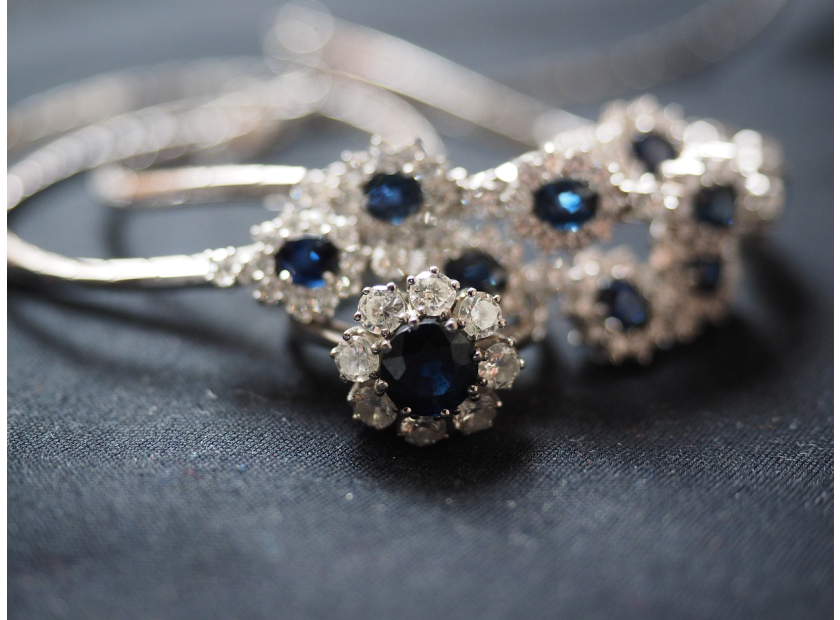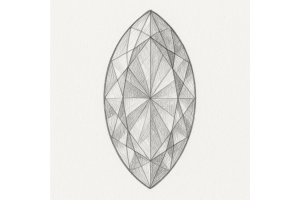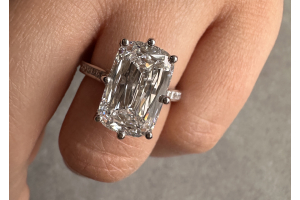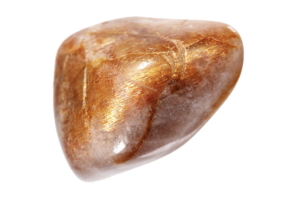GBP
/
GBP
/
Shipping to:
Currency:
What Is a Padparadscha Sapphire? Discover the Rarest Sapphire of All
Padparadscha sapphires are among the most enchanting and rare gemstones, celebrated for their unique blend of pink and orange hues.
The term "padparadscha" originates from the Sinhalese word for "lotus blossom," aptly describing the gem's delicate colour reminiscent of this beautiful flower.
Distinctive Colour Characteristics
What sets padparadscha sapphires apart is their mesmerising colour—a harmonious mix of pink and orange tones.
The ideal padparadscha exhibits a perfect balance between these hues, neither too pink nor too orange.
This delicate interplay creates a salmon-like colour, often likened to the shades of a tropical sunset or the petals of a lotus blossom.
Origins and Sources
Historically, Sri Lanka (formerly Ceylon) has been the primary source of padparadscha sapphires.
The island's rich gem gravels have produced these coveted stones for centuries.
In recent times, deposits have also been found in Madagascar and Tanzania.
While Madagascan padparadschas tend to be more pink with a hint of orange, Sri Lankan specimens are often considered the benchmark for quality.
Formation and Composition
Like all sapphires, padparadschas belong to the corundum family, composed of aluminium oxide.
Their unique colour results from trace elements: chromium imparts pink tones, while iron contributes yellow hues.
The interplay of these elements, along with colour centres within the crystal structure, gives rise to the distinctive pink-orange coloration.
Rarity and Value
Padparadscha sapphires are exceptionally rare, making them highly sought after by collectors and jewellery enthusiasts.
Their value is influenced by several factors:
- Colour: The most prized padparadschas display a well-balanced mix of pink and orange with medium saturation.
- Clarity: Due to their light tones, inclusions are more visible, so eye-clean stones are more valuable.
- Cut: A well-executed cut enhances the stone's brilliance and colour.
- Carat Weight: Larger padparadschas are exceedingly rare and command higher prices.
Identifying Genuine Padparadscha Sapphires
Given their rarity and value, it's crucial to ensure the authenticity of a padparadscha sapphire.
Some stones undergo treatments like heat treatment or beryllium diffusion to enhance or alter their colour.
While heat treatment is generally accepted, diffusion treatments can significantly affect value and should be disclosed.
Obtaining a certification from a reputable gemological laboratory can provide assurance of a stone's authenticity and any treatments it may have undergone.
Padparadscha Sapphires in Jewellery
These captivating gems are often featured in high-end jewellery, including engagement rings, earrings, and pendants.
Their unique colour offers a distinctive alternative to more traditional gemstones.
Notably, Princess Eugenie's engagement ring features a padparadscha sapphire, highlighting its appeal among royalty and celebrities.
For those seeking a unique engagement ring, check out gemstone engagement rings for a variety of options.
Caring for Your Padparadscha Sapphire
Sapphires are durable, ranking 9 on the Mohs scale of hardness, second only to diamonds.
However, to maintain their beauty:
- Cleaning: Use warm, soapy water and a soft brush. Avoid harsh chemicals.
- Storage: Store separately to prevent scratches from harder gemstones.
- Avoiding Damage: Although durable, it's best to remove sapphire jewellery during strenuous activities to prevent potential damage.
Choosing a Padparadscha Sapphire
When selecting a padparadscha sapphire:
- Assess Colour: Look for a harmonious blend of pink and orange.
- Check Clarity: Opt for stones with minimal visible inclusions.
- Verify Authenticity: Request certification from reputable gemological labs.
- Consider Cut and Carat: Ensure the cut enhances the stone's natural beauty and that the size aligns with your preferences and budget.
Frequently Asked Questions
What is the origin of the name "padparadscha"?
The name "padparadscha" is derived from the Sinhalese word for "lotus blossom," reflecting the gem's similar pink-orange colour.
Are padparadscha sapphires more valuable than blue sapphires?
Due to their rarity, high-quality padparadscha sapphires can command higher prices than many blue sapphires, especially those with the ideal colour balance and clarity.
Can padparadscha sapphires change colour over time?
Some padparadscha sapphires may exhibit colour instability, especially if they have undergone certain treatments.
It's essential to source stones from reputable dealers and obtain proper certification.
Are there synthetic padparadscha sapphires?
Yes, synthetic versions exist.
Therefore, it's crucial to request certification to confirm the natural origin of the stone.
What settings are best for padparadscha sapphire jewellery?
Settings that protect the stone's edges, such as bezel or halo settings, are ideal, especially for rings, to ensure the gem's longevity and safety.








